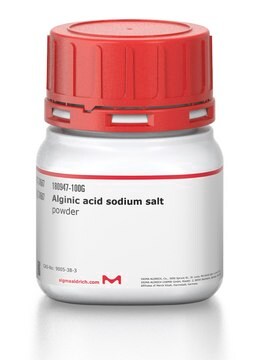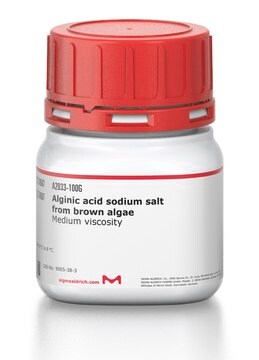W306509
Thyme oil
white, FG
About This Item
Productos recomendados
origen biológico
Thymus vulgaris and/or Thymus zygis oil
Nivel de calidad
grado
FG
Fragrance grade
Halal
Kosher
Agency
follows IFRA guidelines
cumplimiento norm.
EU Regulation 1223/2009
EU Regulation 1334/2008 & 872/2012
FDA 21 CFR 182.2
actividad óptica
[α]20/D −1°, neat
origen
France origin
índice de refracción
n20/D 1.502
bp
195 °C
densidad
0.917 g/mL at 25 °C
aplicaciones
flavors and fragrances
Documentación
see Safety & Documentation for available documents
alérgeno alimentario
no known allergens
alérgeno de la fragancia
linalool, citral (neral+geranial), limonene (sum of D, L and DL), geraniol, α-pinene and β-pinene
Organoléptico
herbaceous; camphoraceous
¿Está buscando productos similares? Visita Guía de comparación de productos
Categorías relacionadas
Descripción general
Aplicación
- Obliteration of H. pylori infection through the development of a novel thyme oil laden nanoporous gastric floating microsponge.: This study presents an innovative application of thyme oil encapsulated within nanoporous microsponges designed to target and eradicate Helicobacter pylori in the stomach, demonstrating the potential of natural compounds in medical applications (Jafar et al., 2024).
- Experimental trials to assess the immune modulatory influence of thyme and ginseng oil on NDV-vaccinated broiler chickens.: This research evaluates the immunomodulatory effects of thyme oil on vaccinated poultry, suggesting its utility in enhancing immune responses in agricultural practices (Hassanin et al., 2024).
- Antimicrobial polysaccharide hydrogels embedded with methyl-β-cyclodextrin/thyme oil inclusion complexes for exceptional mechanical performance and chilled chicken breast preservation.: Highlights the development of polysaccharide-based hydrogels incorporating thyme oil for food preservation, showcasing its antibacterial properties and potential for extending the shelf life of perishable goods (Chen et al., 2024).
- Corn cob nanocellulose packaging for increasing the shelf life of food products.: Investigates the role of thyme oil in biodegradable packaging solutions, enhancing the antimicrobial properties of corn cob nanocellulose composites, which could revolutionize sustainable packaging technologies (Cheran et al., 2024).
- Evaluation of the effectiveness of natural extract as a substituent for synthetic preservatives and antioxidants in pharmaceutical preparations.: Examines thyme oil′s efficacy as a natural preservative in pharmaceutical products, promoting its application as a safer alternative to synthetic additives (Al-Rimawi et al., 2024).
Acciones bioquímicas o fisiológicas
Palabra de señalización
Danger
Frases de peligro
Consejos de prudencia
Clasificaciones de peligro
Flam. Liq. 3 - Skin Corr. 1B
Código de clase de almacenamiento
3 - Flammable liquids
Clase de riesgo para el agua (WGK)
WGK 2
Punto de inflamabilidad (°F)
140.0 °F - closed cup
Punto de inflamabilidad (°C)
60 °C - closed cup
Equipo de protección personal
Faceshields, Gloves, Goggles, type ABEK (EN14387) respirator filter
Elija entre una de las versiones más recientes:
¿Ya tiene este producto?
Encuentre la documentación para los productos que ha comprado recientemente en la Biblioteca de documentos.
Global Trade Item Number
| Número de referencia del producto (SKU) | GTIN |
|---|---|
| W306509-4KG-K | |
| W306509-9KG | |
| W306509-1KG | |
| W306509-1KG-K | 4061838249180 |
| W306509-4KG | |
| W306509-9KG-K | 4061838192653 |
| W306509-SAMPLE | |
| W306509-SAMPLE-K | 4061837519291 |
Nuestro equipo de científicos tiene experiencia en todas las áreas de investigación: Ciencias de la vida, Ciencia de los materiales, Síntesis química, Cromatografía, Analítica y muchas otras.
Póngase en contacto con el Servicio técnico





